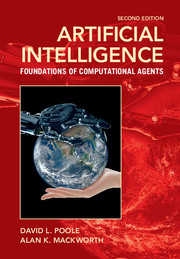Refine search
Actions for selected content:
3326 results in Artificial Intelligence and Natural Language Processing
How to evaluate machine translation: A review of automated and human metrics
-
- Journal:
- Natural Language Engineering / Volume 26 / Issue 2 / March 2020
- Published online by Cambridge University Press:
- 11 September 2019, pp. 137-161
-
- Article
- Export citation
Learning keyphrases from corpora and knowledge models
-
- Journal:
- Natural Language Engineering / Volume 26 / Issue 3 / May 2020
- Published online by Cambridge University Press:
- 10 September 2019, pp. 293-318
-
- Article
- Export citation
NLE volume 25 issue 5 Cover and Back matter
-
- Journal:
- Natural Language Engineering / Volume 25 / Issue 5 / September 2019
- Published online by Cambridge University Press:
- 09 September 2019, pp. b1-b2
-
- Article
-
- You have access
- Export citation
Preface
-
- Journal:
- Natural Language Engineering / Volume 25 / Issue 5 / September 2019
- Published online by Cambridge University Press:
- 09 September 2019, p. 559
-
- Article
- Export citation
NLE volume 25 issue 5 Cover and Front matter
-
- Journal:
- Natural Language Engineering / Volume 25 / Issue 5 / September 2019
- Published online by Cambridge University Press:
- 09 September 2019, pp. f1-f2
-
- Article
-
- You have access
- Export citation
How to tag non-standard language: Normalisation versus domain adaptation for Slovene historical and user-generated texts
-
- Journal:
- Natural Language Engineering / Volume 25 / Issue 5 / September 2019
- Published online by Cambridge University Press:
- 09 September 2019, pp. 651-674
-
- Article
- Export citation
Finding next of kin: Cross-lingual embedding spaces for related languages
-
- Journal:
- Natural Language Engineering / Volume 26 / Issue 2 / March 2020
- Published online by Cambridge University Press:
- 04 September 2019, pp. 163-182
-
- Article
- Export citation
Neural text normalization with adapted decoding and POS features
-
- Journal:
- Natural Language Engineering / Volume 25 / Issue 5 / September 2019
- Published online by Cambridge University Press:
- 20 August 2019, pp. 585-605
-
- Article
- Export citation
Domain bias in distinguishing Flemish and Dutch subtitles
-
- Journal:
- Natural Language Engineering / Volume 26 / Issue 5 / September 2020
- Published online by Cambridge University Press:
- 15 August 2019, pp. 493-510
-
- Article
-
- You have access
- Open access
- HTML
- Export citation
Tackling challenges of neural purchase stage identification from imbalanced twitter data
-
- Journal:
- Natural Language Engineering / Volume 26 / Issue 4 / July 2020
- Published online by Cambridge University Press:
- 15 August 2019, pp. 383-411
-
- Article
- Export citation

Artificial Intelligence
- Foundations of Computational Agents
-
- Published online:
- 12 August 2019
- Print publication:
- 25 September 2017
-
- Book
- Export citation
2 - Monoidal Finite-State Automata
- from Part I - Formal Background
-
- Book:
- Finite-State Techniques
- Published online:
- 29 July 2019
- Print publication:
- 01 August 2019, pp 23-42
-
- Chapter
- Export citation
1 - Formal Preliminaries
- from Part I - Formal Background
-
- Book:
- Finite-State Techniques
- Published online:
- 29 July 2019
- Print publication:
- 01 August 2019, pp 3-22
-
- Chapter
- Export citation
Part II - From Theory to Practice
-
- Book:
- Finite-State Techniques
- Published online:
- 29 July 2019
- Print publication:
- 01 August 2019, pp 159-160
-
- Chapter
- Export citation
3 - Classical Finite-State Automata and Regular Languages
- from Part I - Formal Background
-
- Book:
- Finite-State Techniques
- Published online:
- 29 July 2019
- Print publication:
- 01 August 2019, pp 43-71
-
- Chapter
- Export citation
10 - The Minimal Deterministic Finite-State Automaton for a Finite Language
- from Part II - From Theory to Practice
-
- Book:
- Finite-State Techniques
- Published online:
- 29 July 2019
- Print publication:
- 01 August 2019, pp 253-278
-
- Chapter
- Export citation
Contents
-
- Book:
- Finite-State Techniques
- Published online:
- 29 July 2019
- Print publication:
- 01 August 2019, pp v-viii
-
- Chapter
- Export citation
Preface
-
- Book:
- Finite-State Techniques
- Published online:
- 29 July 2019
- Print publication:
- 01 August 2019, pp ix-x
-
- Chapter
- Export citation
9 - The Aho–Corasick Algorithm
- from Part II - From Theory to Practice
-
- Book:
- Finite-State Techniques
- Published online:
- 29 July 2019
- Print publication:
- 01 August 2019, pp 236-252
-
- Chapter
- Export citation
Index
-
- Book:
- Finite-State Techniques
- Published online:
- 29 July 2019
- Print publication:
- 01 August 2019, pp 302-304
-
- Chapter
- Export citation
